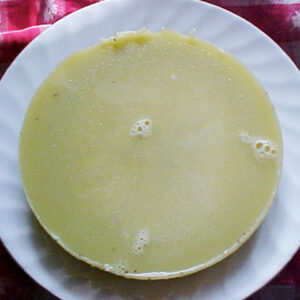
Marijuana Cooking: From Concentrates to Cannabutter
Cooking with marijuana and cannabis concentrates is a relatively simple process.
Edible cannabis concoctions provide somewhat different effects than smoking marijuana or cannabis oil.
Infused edibles are also a more suitable choice for treating certain medical conditions.
How and why to cook with marijuana and cannabis concentrates.
Cooking with marijuana or with cannabis concentrates is nothing new. But now that cannabis is legal in many U.S. states, cooking with cannabis is becoming all the rage. We’ve seen cannabis infused into everything from cotton candy to pretzels to beer.
Sure you can purchase marijuana-infused foods, aka “edibles,” at any dispensary. But what fun is that? And, frankly, factory-made edibles cannot compare in quality to home-cooked edibles made from scratch. That is assuming you can cook.
Why cook with marijuana and cannabis oil?
Edibles are actually a great way to consume marijuana. They save your lungs and heart from the dangers of smoking and vaping, and edibles provide long-lasting effects.
Edibles can also improve gut and digestive health. Interestingly research suggests that an imbalance in gut bacteria is actually a major cause of depression. And studies are showing that cannabis promotes a strong gut biome which in turn improves overall health and mood. Moreover, cannabinoids have been shown to help reduce the inflammation that comes with conditions such as Crohn’s Disease, inflammatory bowel, and ulcers.
Edibles are also great for those who are treating loved ones who can’t take care of themselves — such as Alzheimer’s disease patients and children. (Of course, you should never give marijuana edibles to a child without the direction of a qualified healthcare provider.)
What about the buzz? Something that most people are not aware of is that edibles don’t necessarily need to be made with marijuana and THC. Non-intoxicating edibles can be made with cannabinoids such as CBD or CBG found in cannabinoid-rich hemp flower.
And non-cooked foods that are prepared without having to be cooked — say, guacamole, for instance — can be made with THCA (found in raw marijuana buds) which is also non-intoxicating (until you cook it) but has many of the same benefits as THC.
What kinds of foods can be made with marijuana and cannabis oil?
The venerable pot brownie has been made famous — or infamous — in countless Hollywood movies. And for good reason. When made properly, cannabis-infused brownies utterly rock.
But not everyone loves brownies. So what other kinds of foods can be made with marijuana?
We don’t recommend you toss marijuana buds on top of your salad or in your tuna sandwich. That’s because, frankly, raw marijuana and cannabis oils taste terrible (to most people).
However, just about any other food that is prepared with oil or butter is fair game. It’s even possible, and not uncommon, to add powdered cannabis directly into things like smoothies or pasta sauce. You can also buy water-soluble THC or CBD for adding to beverages.
It’s important to point out that cannabinoids and terpenes are oils. And as such, these compounds don’t mix with water. If you eat them, most of the supply will end up just being absorbed into fatty tissues in the body rather than dissolving into the bloodstream. Because of this, cannabis is not great for certain applications such as making tea or soup. However, by infusing cannabinoids into an oil, the oil can be added to things like smoothies, soups, and sauces.
What about the taste?
Cooking with raw flower or cannabis concentrates will add a distinct “green” flavor and aroma to your edibles. There’s no way around it. If it’s done right, however, cannabis adds an exotic palette to brownies and sauces.
If you’d rather avoid the flavor, THC and CBD isolates are odorless and flavorless and can also be added to foods. The only difference being that isolates do not contain any of the beneficial essential oils — aka terpenes — that give various strains of cannabis their distinctive flavors and aromas.

How much marijuana or cannabis concentrates should you add to foods?
The most important step before making cannabutter or cannabis oil, is to consider how you’re going to use it so you can add the proper amount of cannabis. Too much THC in one serving and you’re in for a walloping buzz. And too much CBD can make you lethargic. Add too little and you might not get the desired effects. A single dose is usually anywhere from as low as five milligrams up to hundreds of milligrams depending on why it’s being consumed.
Determining dosage depends on the product being used:
- Raw hemp or marijuana flower usually contain anywhere from 15 to 25 percent THC or other cannabinoids. So one gram or 1,000 milligrams of raw flower might contain from 150 to 250 milligrams of cannabinoids. If the desired dosage is 25 milligrams then you’ll have six to ten servings.
- Cannabis oil concentrates can have cannabinoid content anywhere between 30 and 90 percent. That’s a wide range, so it’s important to know the potency of the product you’re using. One gram of oil that contains 30 percent cannabinoids will contain 300 milligrams or 12 doses at 25 milligrams. One gram of a product that contains 80 percent cannabinoids will contain 800 milligrams or 40 doses at 25 milligrams. As you can see that’s a huge difference, so it’s important to know what you have and do the math.
- Cannabinoid isolates, being that they are nearly 100 percent cannabinoids, should be measured by dividing the total weight by the desired number of doses. For example, if you’ve got one gram of isolate, then you’ll be able to make 40 servings of whatever it is your cooking each containing 25 milligrams of cannabinoids.
It’s also important to understand that only roughly one-fifth of the cannabinoids in edibles are actually absorbed into the bloodstream. So if you’re eating a brownie with 25 milligrams of cannabinoids then you’ll get the same effects as if you injected yourself with five milligrams of an isolate. (Don’t do that.)
That being said, what really matters is knowing the effects of the serving size. It takes some practice and experimentation to achieve perfection, so don’t give it up if your first attempt is a flop.
How to infuse oils and butter with cannabis
Butter that has been infused with cannabis is often referred to as “cannabutter.” It’s simple to make and can be added to everything from toast to baked goods to sauces.
Vegetable oils of all types such as olive oil and coconut oil can also easily be infused with cannabis.
Cannabutter and cannabis-infused oils can be made in serval ways. They can be made by adding ground raw hemp or marijuana buds into the butter or oil and then cooking it. They can also be made with cannabis concentrates including oil, paste, or solid forms. Also, purified cannabinoid isolates can also be used in oils and butter. And finally, powdered, water-soluble cannabinoids can be added to beverages.
When using raw flower, the buds need to be ground down. However, avoid grinding your buds into a powder. This makes it difficult to strain out the spent plant material. Grind to a size that’s larger than the holes in your strainer or cheesecloth.
If you want the high that comes with marijuana, then you’ll need to cook the oil or butter for over an hour in order to convert all of the non-intoxicating, raw THCA into THC.
Alternatively, buds can be baked at 240 degrees for about 45 minutes before grinding. This converts the THCA to THC. (This process is known as decarboxylation.)

Instructions to make cannabutter (cannabis-infused butter) or cannabis oil.
- Grind the buds until the crumbs are a little larger than the holes in the strainer of cheesecloth you’ll be using. Be sure you’ve determined the total amount of cannabinoids in the buds and write that down.
- Add marijuana to butter or oil in a saucepan, double boiler, or slow cooker.
- Add water if you’re not using a double boiler. This keeps the temperature nearer to the boiling point when cooking to avoid burning.
- Cook over a low burner or set the slow cooker to 250 degrees (or “low”). Simmer for about an hour, or go longer for more flavor.
- Remove from heat and let it cool down until you can handle it.
- Strain out plant material into a pot or jar using a fine strainer or cheesecloth.
- Chill the oil in the fridge. Wait until the water and oil or butter separate. Then you can just pour off the water.
- Determine the potency and dosage by dividing the total amount of cannabinoids by the desired dosage. For example, if you have 1,000 milligrams of cannabinoids and you want 100-milligram doses, then you have 10 servings’ worth of oil or butter.
How to use cannabutter or cannabis oil in recipes.
As we mentioned, cannabutter and cannabis oil can be used in any way that you’d normally use them and in the same amounts. It can be used to bake brownies or other baked goods, added to sauces, spread on toast, added to smoothies, or even used in salad dressing.
Again, the important thing to remember is to determine the desired dosage and make an appropriate serving size. For example, if you have add one cup of oil to a brownie mix, and that oil contains 1,000 milligrams of cannabinoids, and you want 100-milligram doses, then you’ll end up with ten single-serving brownies.
How to cook with cannabis concentrates (oil, paste, wax, or solid)

Cannabis concentrates are basically cannabis flower extracts that have been concentrated via a series of filtration and distillation processes to produce a high potency oil, paste, wax, or solid.
- Cannabis oils are generally sold in dropper bottles for easy dosing. The potency of cannabinoids should be printed right on the bottle.
- Cannabis concentrates such as hash oil can be thick and pasty and hard to handle. For this reason, it’s best to purchase cannabis concentrates in convenient, prefilled syringes. The great thing about cooking with cannabis concentrate syringes is that you can easily squirt the exact desired dosage into your recipe.
- Cannabis waxes and solids such as shatter are generally purchased by the gram and come in small jars. Again their potency should be printed right on the package. Cannabis waxes and solids can be melted into butter or oil or mixed into a recipe.
Keep in mind that all cannabis concentrates have a very strong flavor.
So that’s it, our little primer on cooking with marijuana and cannabis concentrates. Remember to be super careful when determining dosage. Edibles that are too potent can produce unpleasant experiences. Also, practice makes perfect. It might take a few tries to get it right, but it will be well worth the effort.







